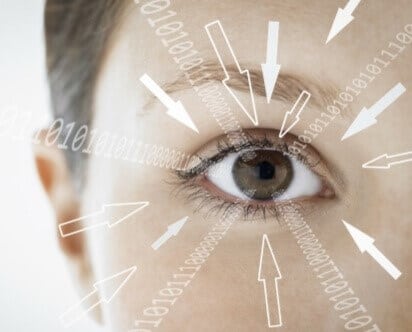Is LASIK or the SMILE Correction Procedure Safe?
This is obviously the first consideration for anybody looking into a laser eye surgery. The prospect of injuring a sense you’ve come to depend on is a frightening prospect. Nobody wants to go through a surgery without knowing all the facts ahead of time.
There’s good news in regard to the SMILE procedure, though.
SMILEstands for Small Incision Lenticule Extraction, and SMILE correction and other forms of LASIKhave one of the best safety records of any optional surgery.
Laser eye surgeries have been in the market for over three decades, and have become a fixture in the eye correction field.
LASIK, SMILE and alternative surgeries have been the subject of a number of clinical studies which have proven that laser eye correction is both safe and effective for candidates that qualify. Let’s take a look at the data!
Laser Eye Surgeries Have Been Performed Over 16 Million Times
LASIK is the among the first, and is certainly the most popular, laser eye surgery procedure in the market, and it serves as the procedural baseline as well. Thousands of studies have concluded that LASIK is very safe and capable of improving a wide variety of vision issues.
Recently, a study was released that combined 97 studies on laser vision correction and synthesized their findings to get a global sense of the effectiveness of LASIK. This synthesis concluded that:
- Over 90% of the people that underwent LASIK wound up with perfect, 20/20 vision. The pool of people that achieved 20/40 was very close to 100%.1
- Very few patients (under 1%) saw a significant reduction of their eyesight clarity after their post-procedure results.1
- Around 99% of patients were satisfied with the results of their procedure.1
SMILE Correction Procedure Is Just As Safe And Effective As LASIK

While LASIK and its contemporaries are pretty similar in methodology, there are things that set them apart and that might make them more attractive to certain patients over others. For instance, LASIK isn’t always a suitable option in the presence of certain refractive errors, and thin corneas can prove a barrier to a successful surgery. Luckily, there are other surgeries that have come to fill in the gaps.
The SMILE procedure is the latest development in the laser eye surgery market, introduced over 10 years ago and recently approved by the FDA. Many patients prefer SMILE correction as it minimizes the nerve damage done to the outside of the eye, reducing the chance of healing complications and making recovery swift.
The SMILE procedure has been performed successfully on millions of eyes, and a growing body of clinical studies have shown that SMILE is comparable to LASIK in its safety profile. Over a hundred studies were complied in a recent report that found that SMILE was, at the very least, the equal to LASIK in safety and efficacy.
Side-effects and Complications are Uncommon
While most side effects or issues that emerge out of refractive eye surgeries resolve fairly quickly on their own, it’s worth knowing what the risks are when undergoing any surgery. Potential side effects include:
- Over-correcting or under-correcting the sight issue:Essentially, this means that the vision isn’t perfect after a procedure. Follow-up procedures can usually resolve these issues, as can glasses or contact lenses.
- Loss of visual sharpness:1-2% of patients might experience this for a while after the procedure. Luckily, this loss almost always clears up by six months after the procedure date.
- Dry eye:Laser eye surgery breaks through the eye’s tear film, which can cause the eye to produce fewer tears and create dry eye symptoms. Patients often experience this for a few weeks or months after the procedure; only very rarely do these symptoms persist for longer. LASIK actually carries the biggest risk of this side-effect, and if you or your doctor is worried about dry eye complications, SMILE is often considered a better treatment.
- Flap problems:In LASIK, a flap is made in the outer layer of the eye to get access to the corneal tissue. Should the patient rub their eyes or have an accident during athletic activities too soon after the surgery, there might be issues with this flap not staying put and healing correctly. The postoperative recovery instructions should protect you and your eye from these issues. If you expect to resume physical activity quickly after, SMILE might be a better choice since it doesn’t involve a flap.
Serious Complications are Extremely Rare for SMILE Correction
One of the biggest worries for many clients is the possibility of going blind. Luckily, blindness almost never occurs as a result of SMILE correction or LASIK.
If an eye infection appears after a surgery and that infection is untreated and managed poorly, it could have a negative impact on sight. However, the risk of this occurring with a qualified and experienced eye surgeon is extremely low, and not worth worrying about at all as long as you make sure to get checked up if your eye starts feeling odd after the procedure. Serious complications like this are actually pretty easy to avoid.
As the technology used for SMILE correction and LASIK continues to improve, the chance of negative side effects will correspondingly decrease. For instance, a laser is now used to make a flap in the eye instead of a blade, which minimizes the potential for an infection. Make sure to use a modern clinic with updated technology to ensure that your surgery will be free from complications.
Get A Consultation to Make Sure It Is A Good Option For You
Laser eye surgery is a great, safe, and effective procedure for those that qualify as good candidates. However, if your eyes are for some reason excluded from that category, the risk of complications increases.
Any experienced surgeon will perform a comprehensive evaluation of your eye to make sure that the treatment plan you’re developing is a safe one. The thickness and shape of each person’s cornea is taken into account before you’ll be encouraged to have any surgery, and before the type of surgery is determined, to ensure that it will be a productive procedure for your eyes.
If you aren’t a suitable candidate for a given surgery, take it seriously – good eye surgeons know the warning signs to look out for. If you are, though, you’re one step closer to getting clear vision and freedom from eyeglasses and contacts. Get a SMILE correction consultation today!























